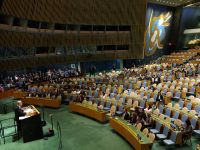Figures released by the Central Bank show that the number of credit and debit cards issued in Lebanon reached 293,086 cards in the second quarter of 2000—a 9.24 percent increase from the first quarter of the year. The number of ATMs rose 3.95 percent to 395 machines on a quarterly basis. The Greater Beirut area had 232 ATMs, accounting for 58.74 percent of the total.
The average monthly domestic payments by residents rose 4.35 percent to $12 million quarter-on-quarter, while the average monthly payments abroad by residents increased 6.35 percent to $13.6 million for the same period. Further, the average monthly value of cash withdrawals by residents using ATMs rose 14.14 percent to $43.6 million quarter-on-quarter and increased 3.36 percent to $492,939 by non-residents. Domestic card payments in Lebanese pounds accounted for 12 percent of aggregate payments in all currencies, while local currency withdrawals represented 50.4 percent of the total.
Figures released by the Central Bank for the second quarter of 2000 show that the aggregate amount of subsidized loans to productive sectors in Lebanon reached $205 million since the program was established in the first quarter of 1997. The program consists of a 5 percent subsidy on the interest for loans extended in foreign currencies to agriculture, industry, and tourism. The industrial sector accounted for $141.6 million—or 69 percent of the total, followed by tourism with $51.2 million (25 percent) and agriculture with $12.2 million (6 percent).
Subsidized loans rose by $13.6 million (7.1 percent) on a quarterly basis and by $57.9 million (39.4 percent) year-on-year. Further, subsidized loans extended in Lebanese Pounds totalled LL4.987 billion by the end of June. The share of industry stood at 92.2 percent.
In parallel, total loans extended by specialized banks and benefiting from reserve requirement exemptions and facilities reached LL738 billion 702.6 billion (about $489.6 million) since the program was established in the first quarter of 1996. Such loans rose by 5.04 percent on a quarterly basis and by 70.6 percent year-on-year. The industrial sector accounted for 40.8 percent of the total, followed by housing with 24.8 percent, and 23.6 percent for tourism. Services, agriculture and electricity accounted for the remaining 10.8 percent. — (Lebanon Invest)







